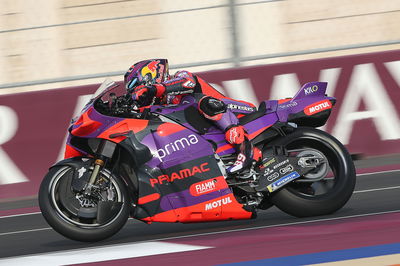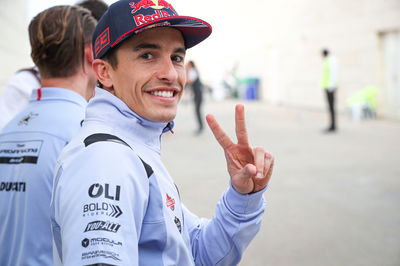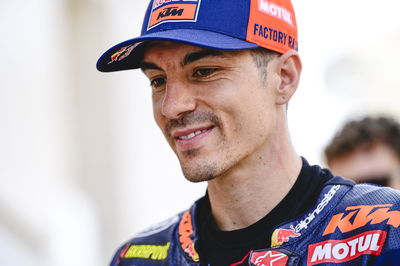Jorge Martin sets the pace in FP1 at the Qatar MotoGP
Jorge Martin got his 2024 season off to the perfect start as he led FP1, while Pedro Acosta stole the show.

Jorge Martin has topped the opening MotoGP practice session of 2024, as Pedro Acosta impressed once again.
Aleix Espargaro managed to split the two Spaniards and finish second fastest for Aprilia, while Marc Marquez was fourth ahead of Brad Binder.
- 2024 Qatar MotoGP - Friday Practice - LIVE UPDATES!
- Francesco Bagnaia: “He has a good chance because he is Marc Marquez”
Despite Moto3 and Moto2 running prior to the first MotoGP practice, conditions were causing plenty of riders to run wide as Miguel Oliveira and Binder both went off track early on in their push laps.
Carrying on his impressive pre-season, rookie Pedro Acosta was the early pacesetter for the GASGAS Tech 3 KTM team.
Alex Marquez then replaced Acosta at the top of the timingsheets before Marc Marquez took over with a time of 1:53.408s.
A slow start to FP1 for the reigning world champion left Francesco Bagnaia last, as rear tyre concerns resulted in him heading back down pit lane while others continued their first stint.
At the front, Jorge Martin went top by nearly two tenths before a Ducati 1-2-3 was complete when Enea Bastianini shot to the top.
KTM’s strong start continued as Jack Milelr then went second, while Acosta moved up to P4.
Martin regained top spot with just over half the session remaining, while Marc Marquez also improved but not enough to move up from fifth place.
After getting caught up behind Alex Rins, Martin lost out on top spot as Marquez went quickest by just -0.014s.
As lap times continued to improve, KTM began showing their hand as Binder dipped below the 1m 53s barrier.
However, it was rookie sensation Acosta who had the pace as he went even quicker with a time of 1:52.695s - two tenths ahead of Binder.
Marc Marquez then split the two KTM’s before a stunning save from Acosta took place at turn one.
The Spaniard momentarily lost the front-end of his RC16, while Martin then moved the benchmark time further forward.











